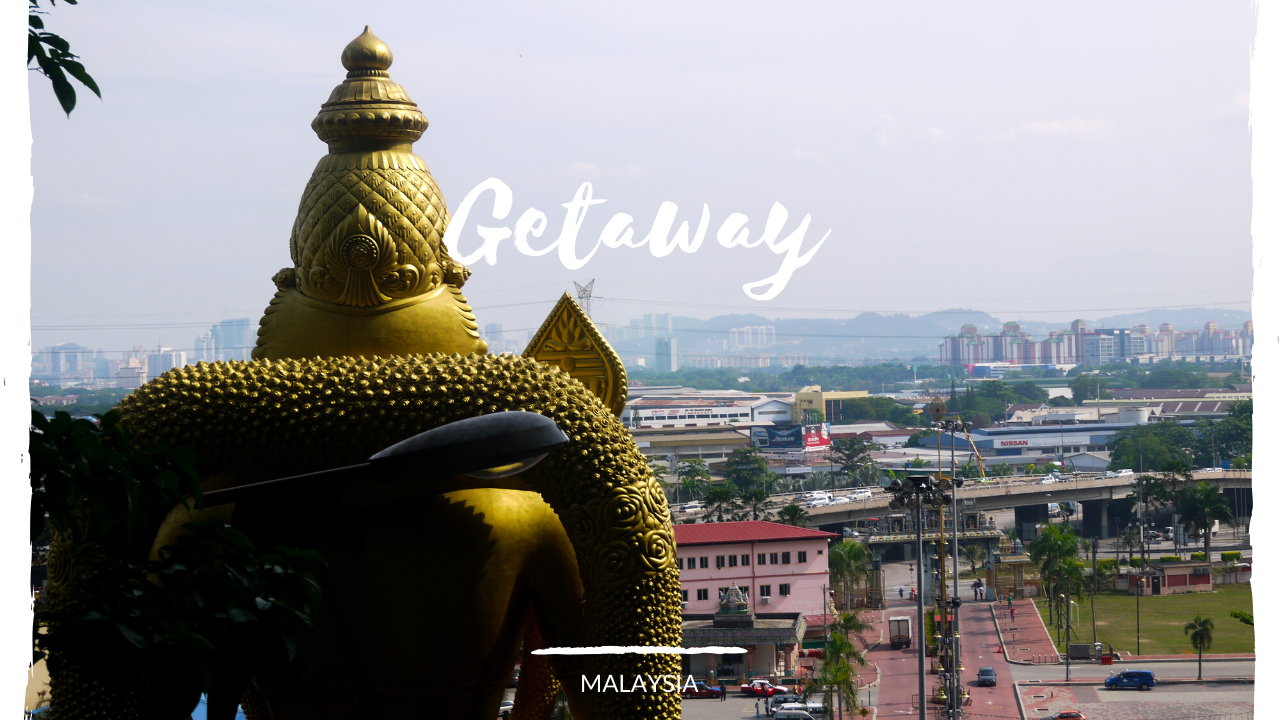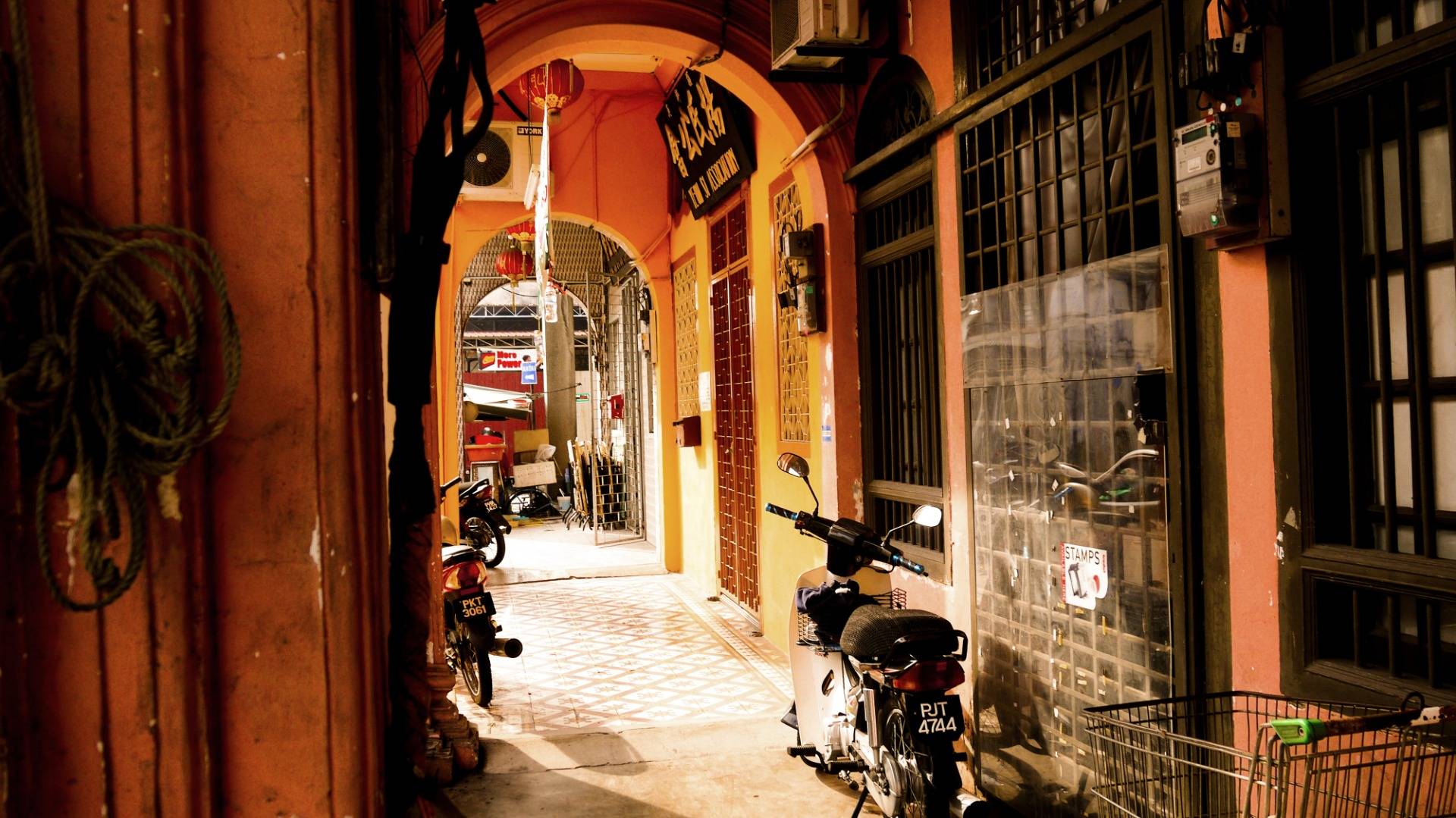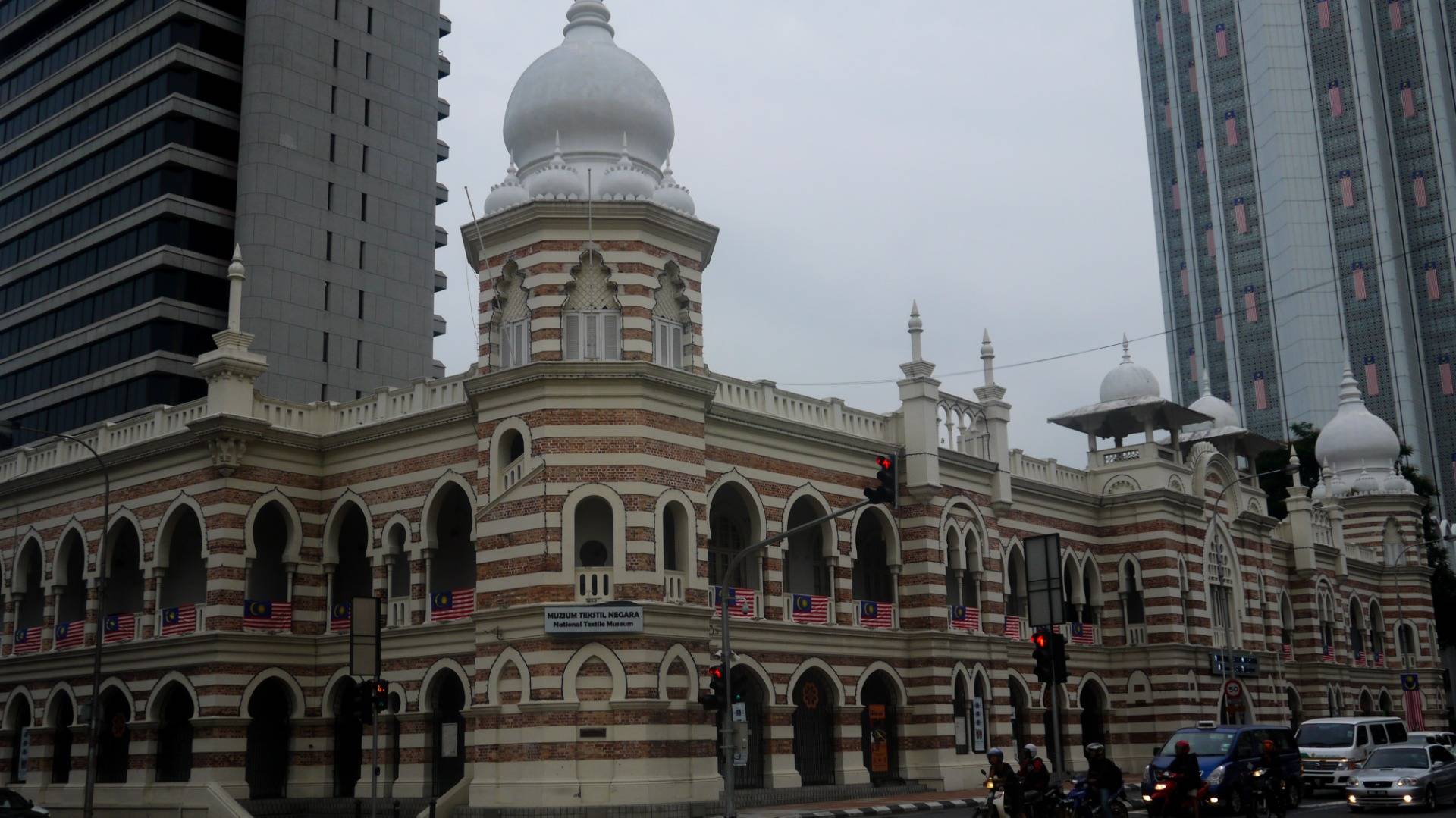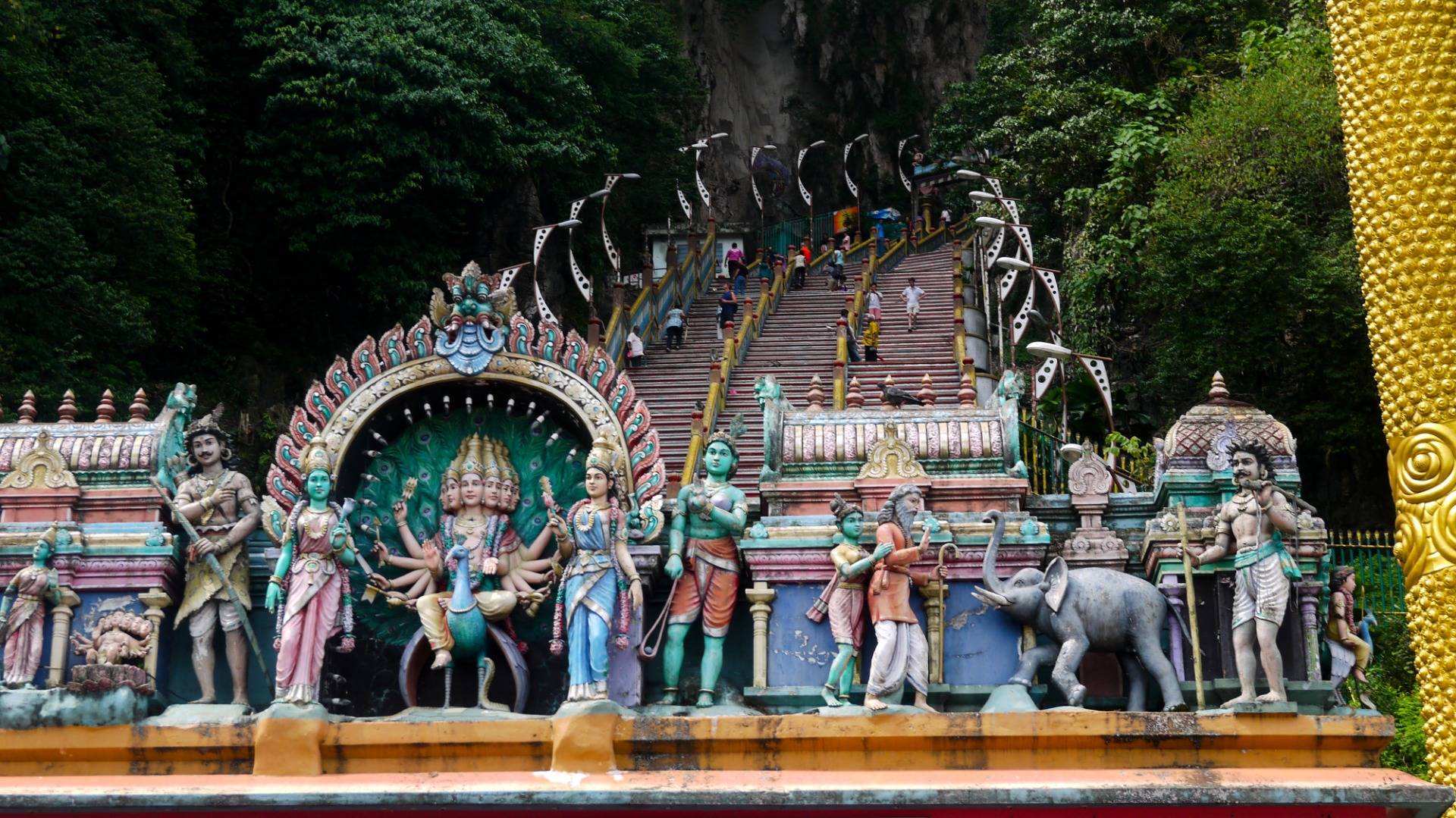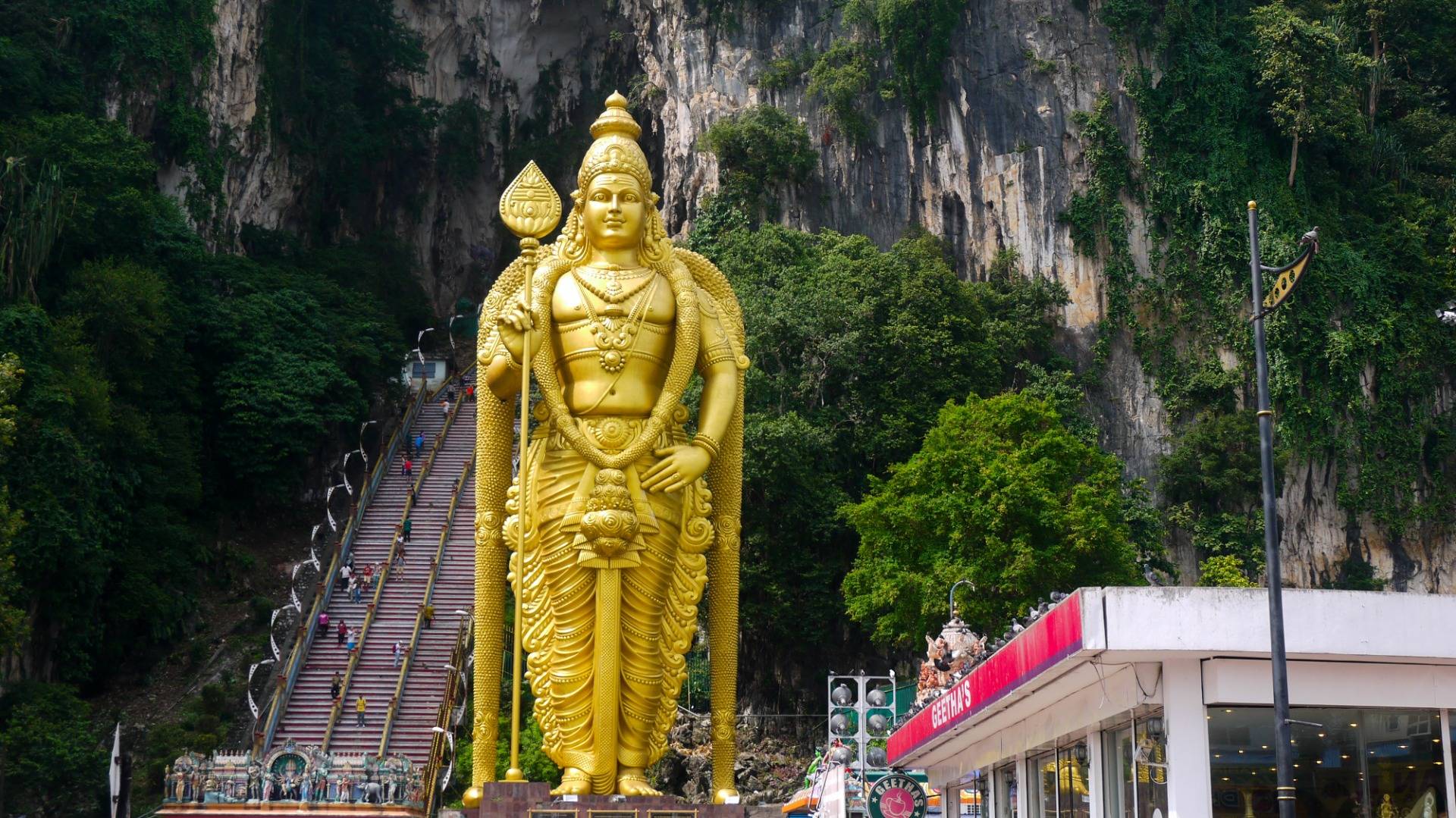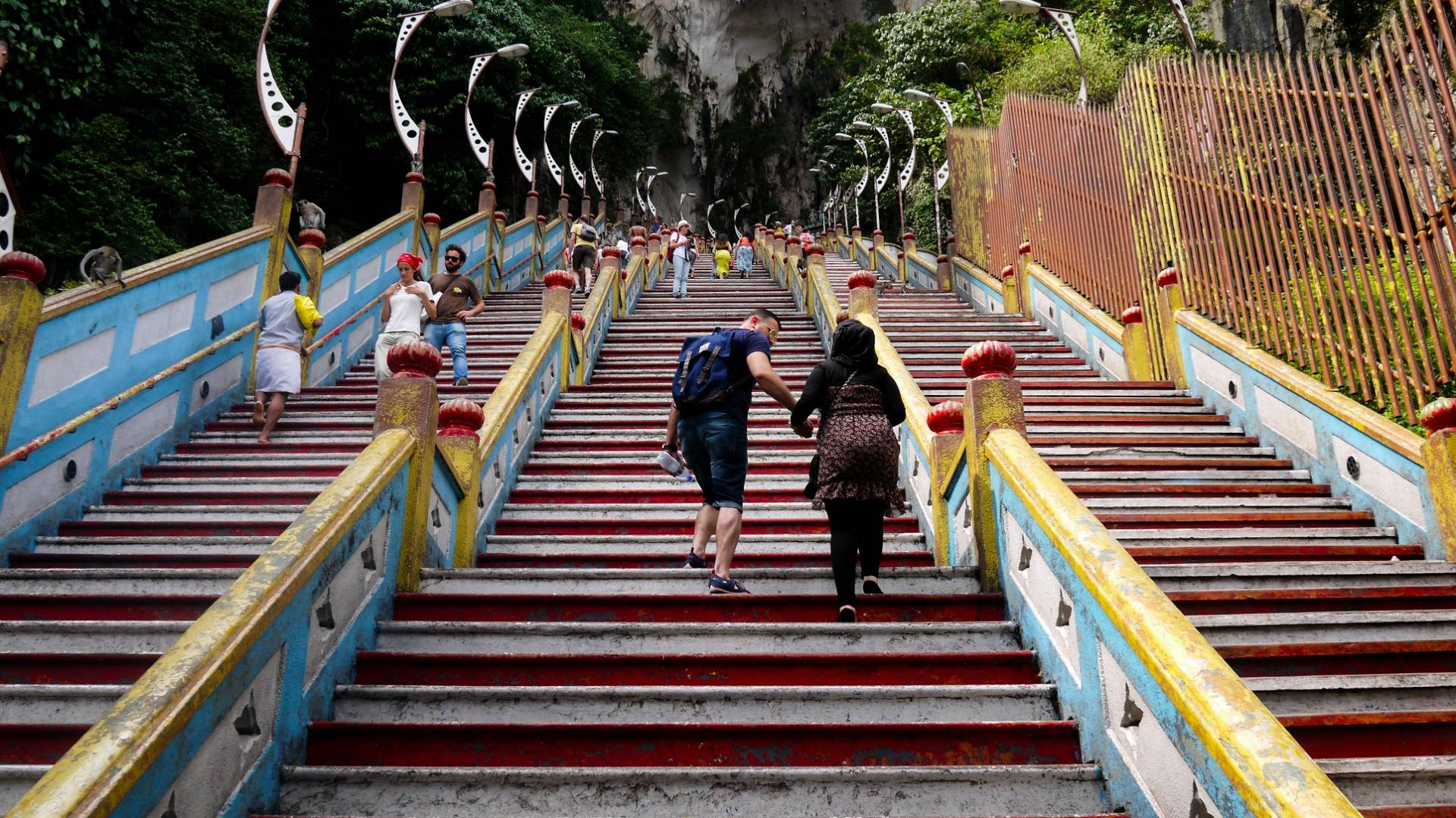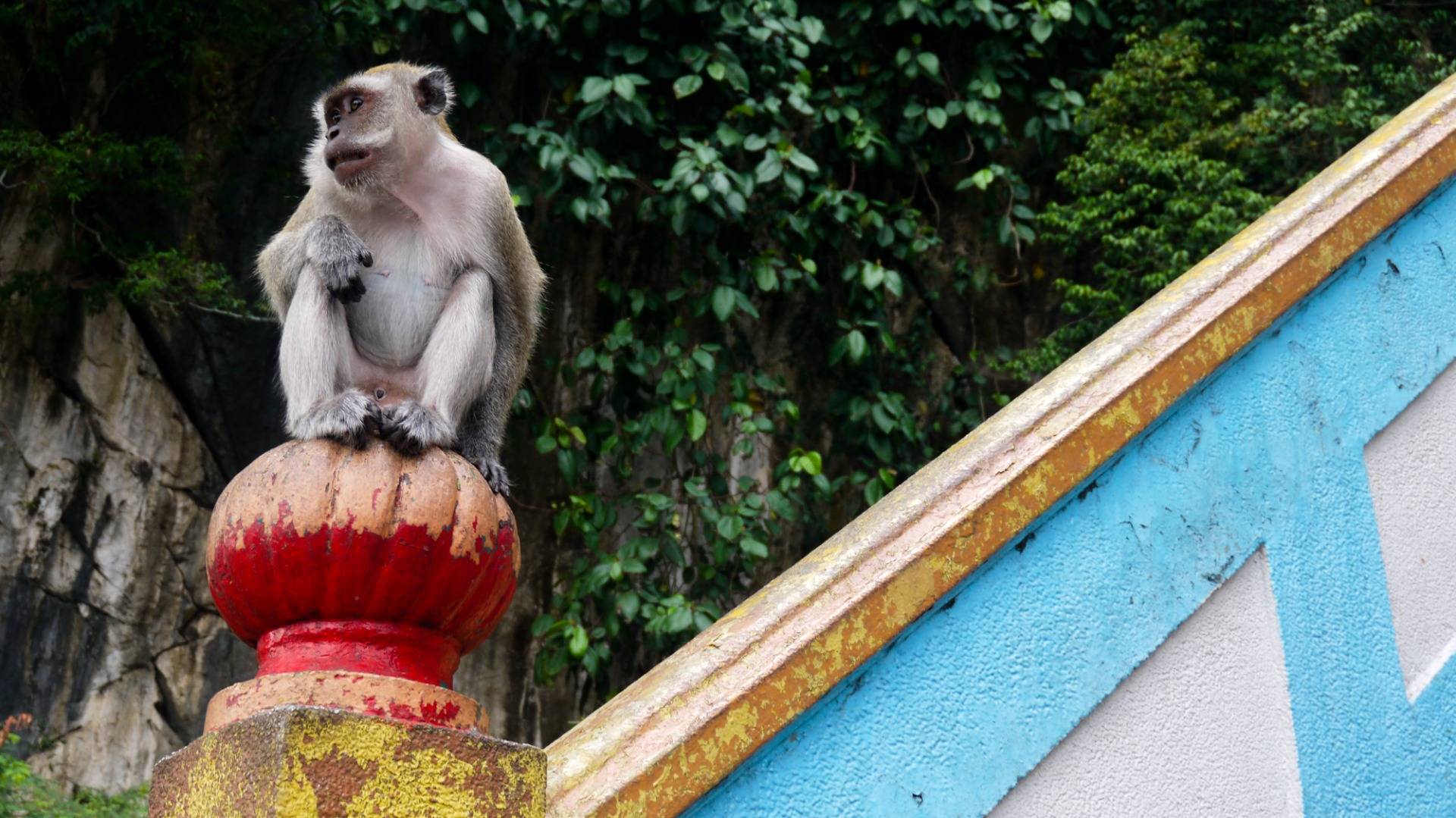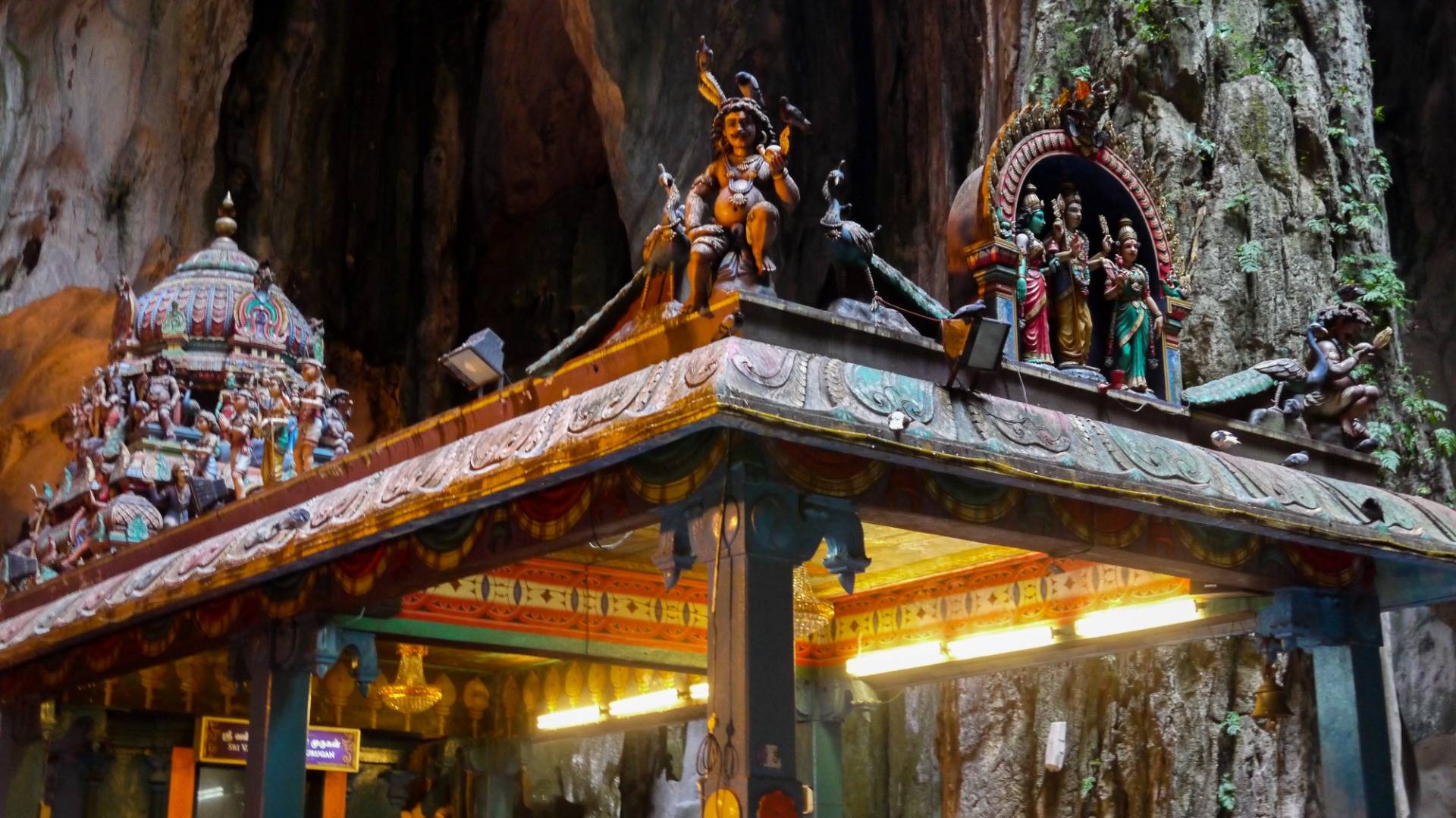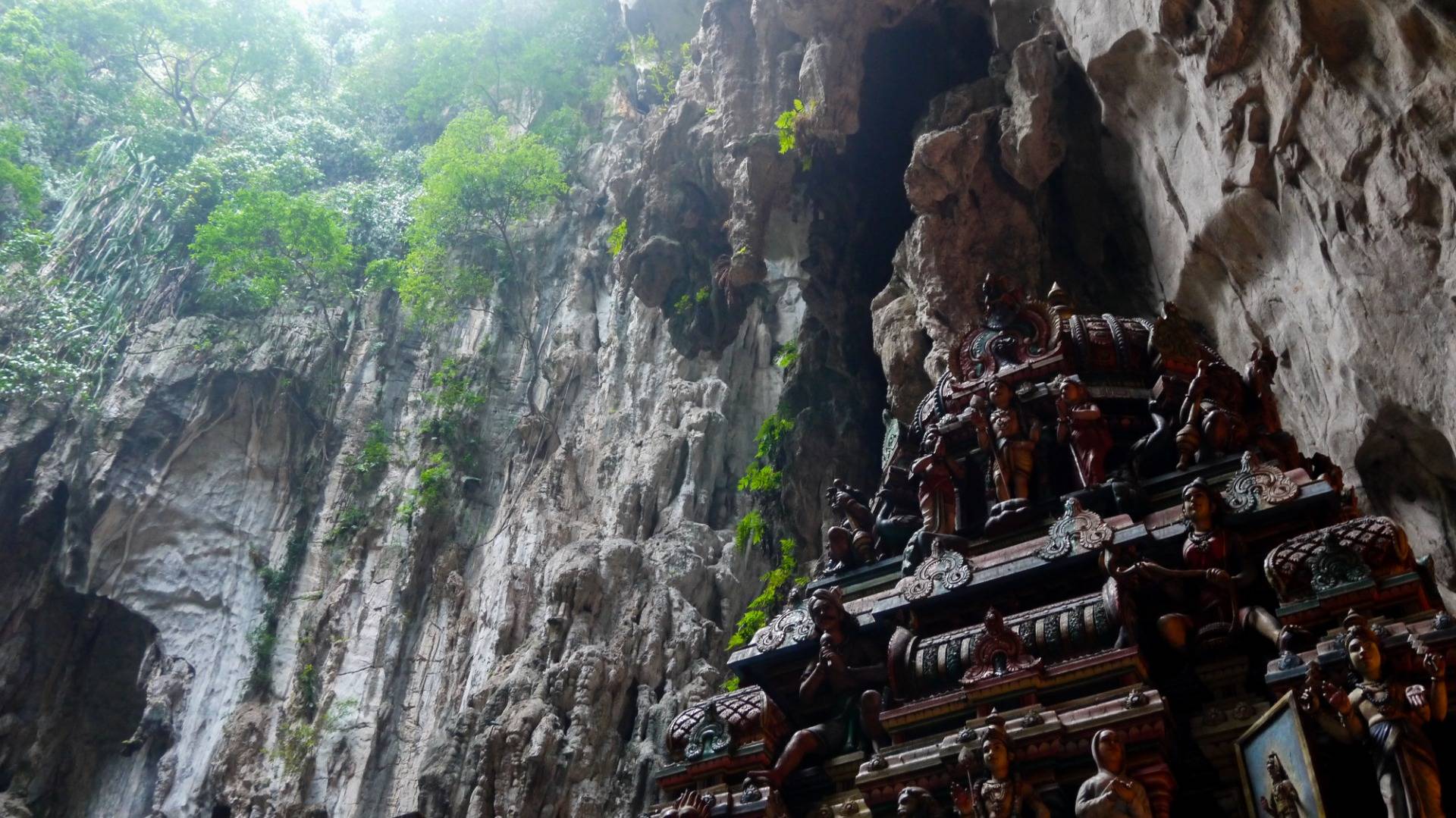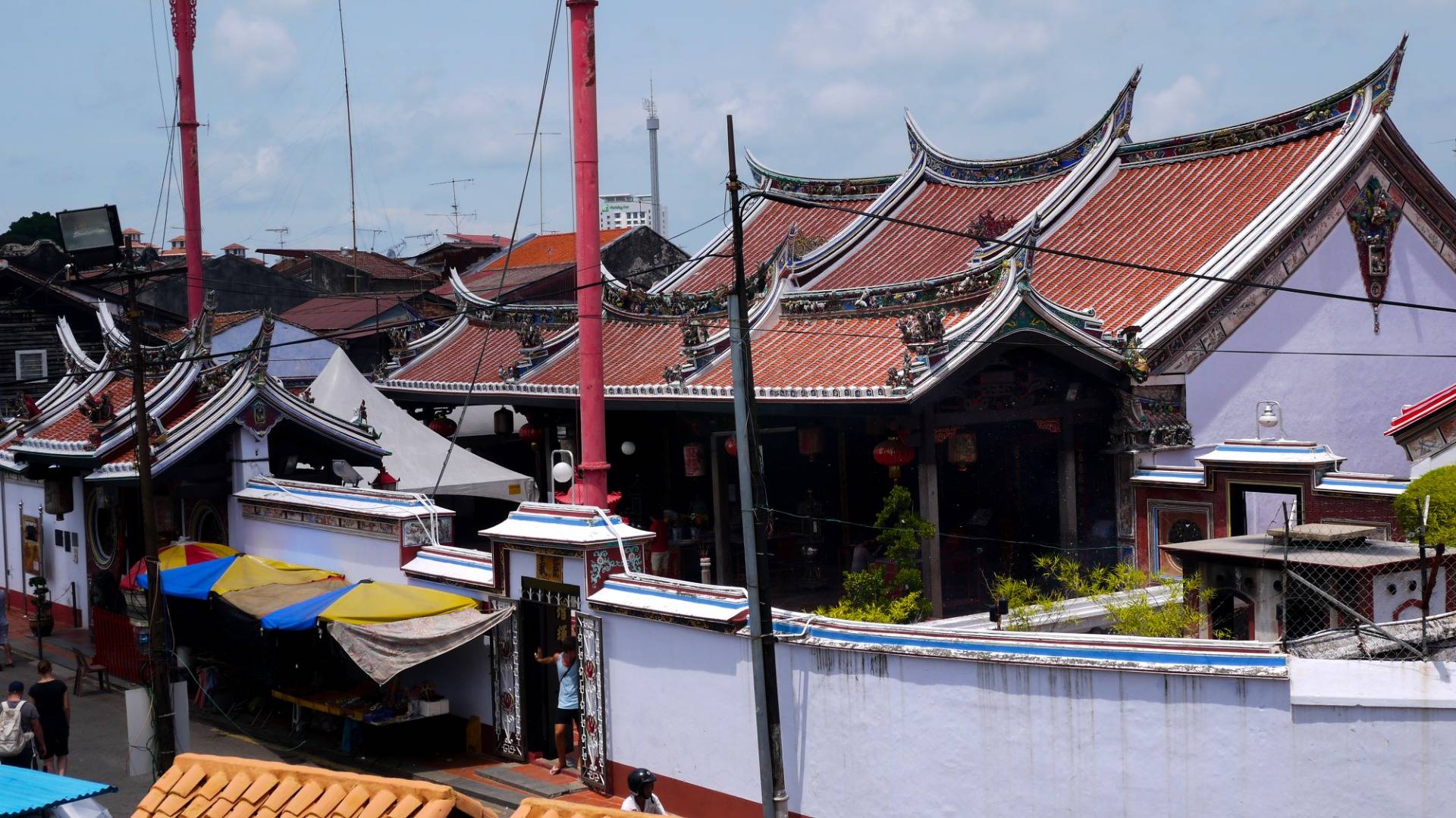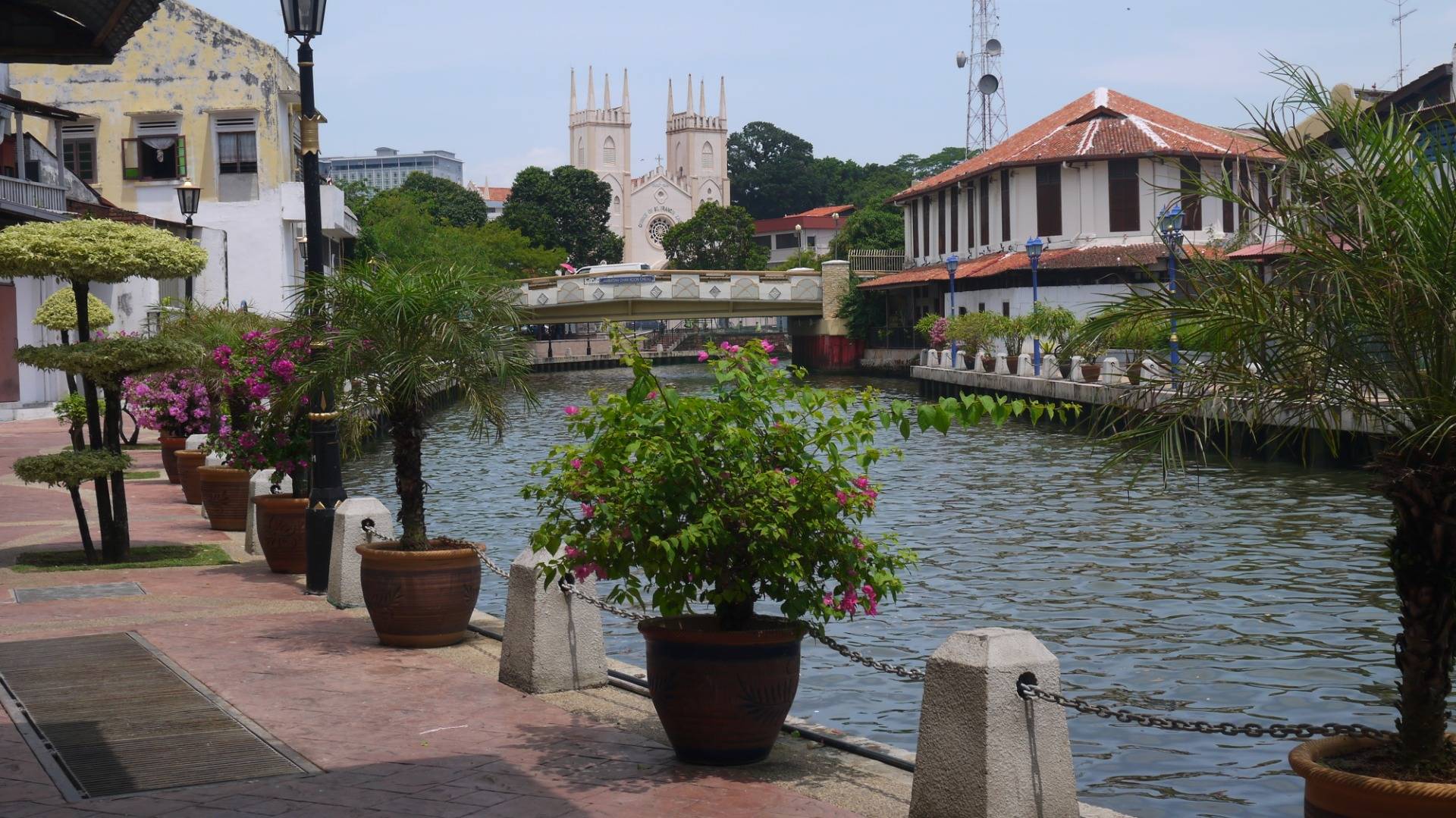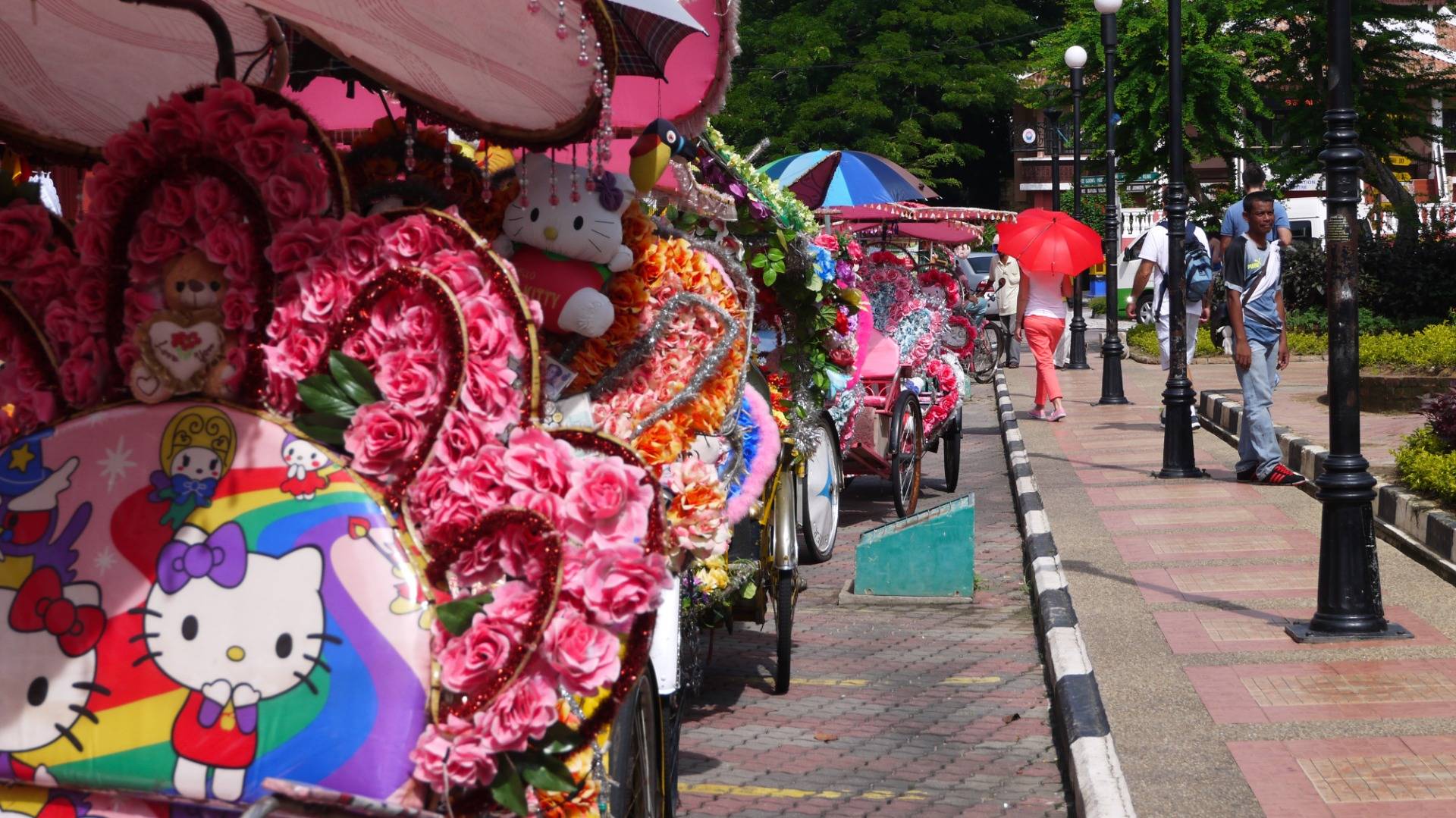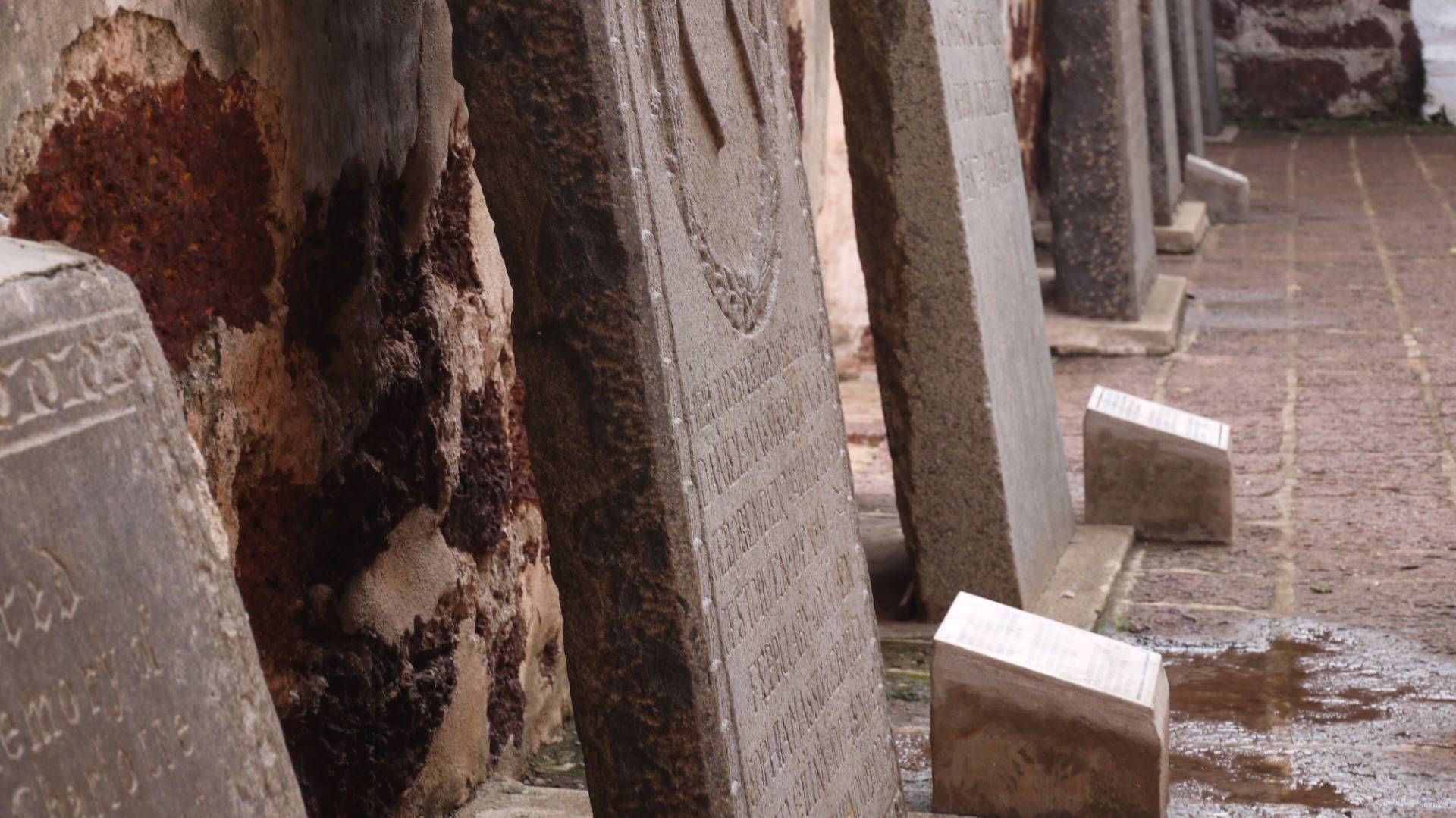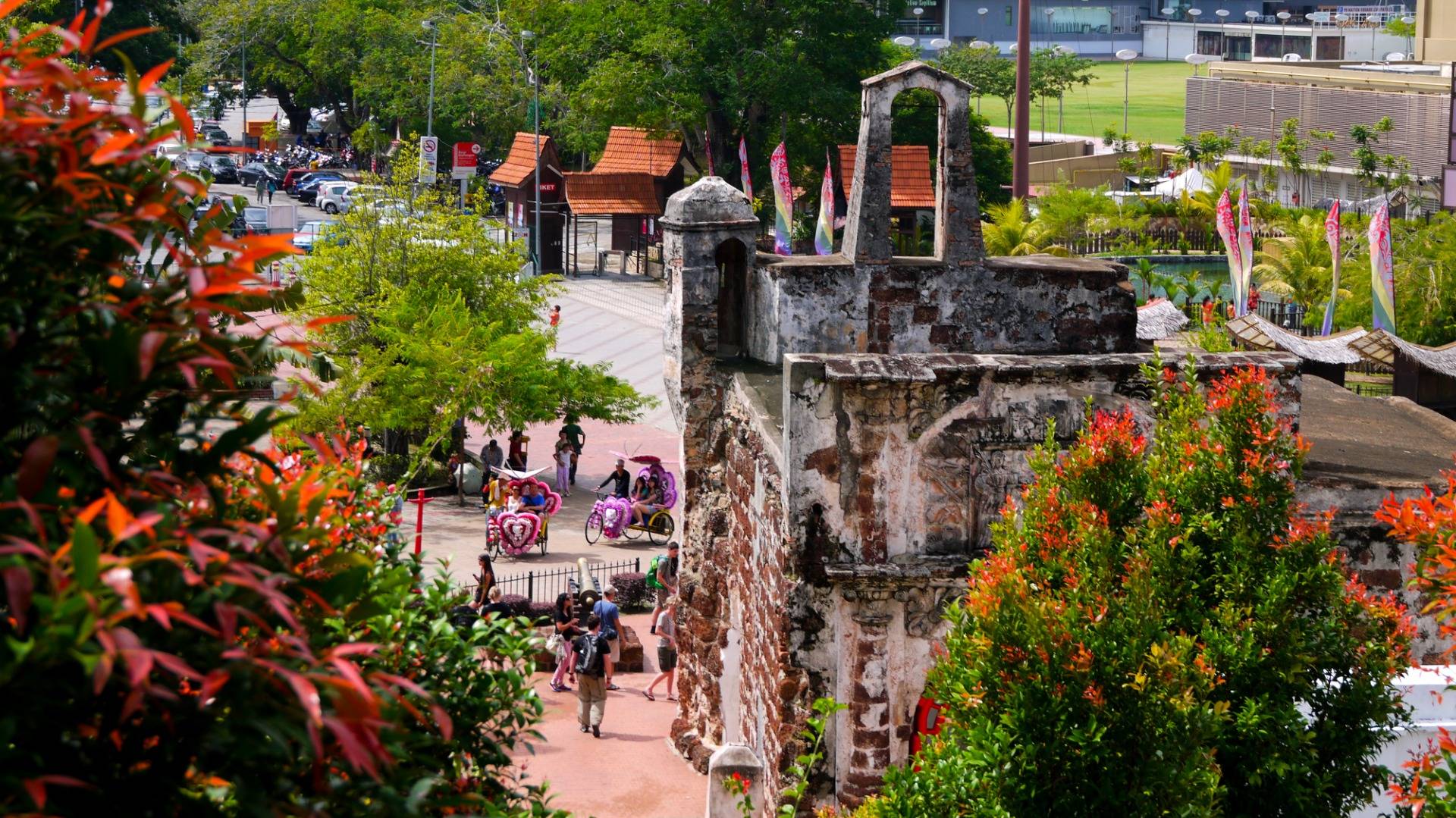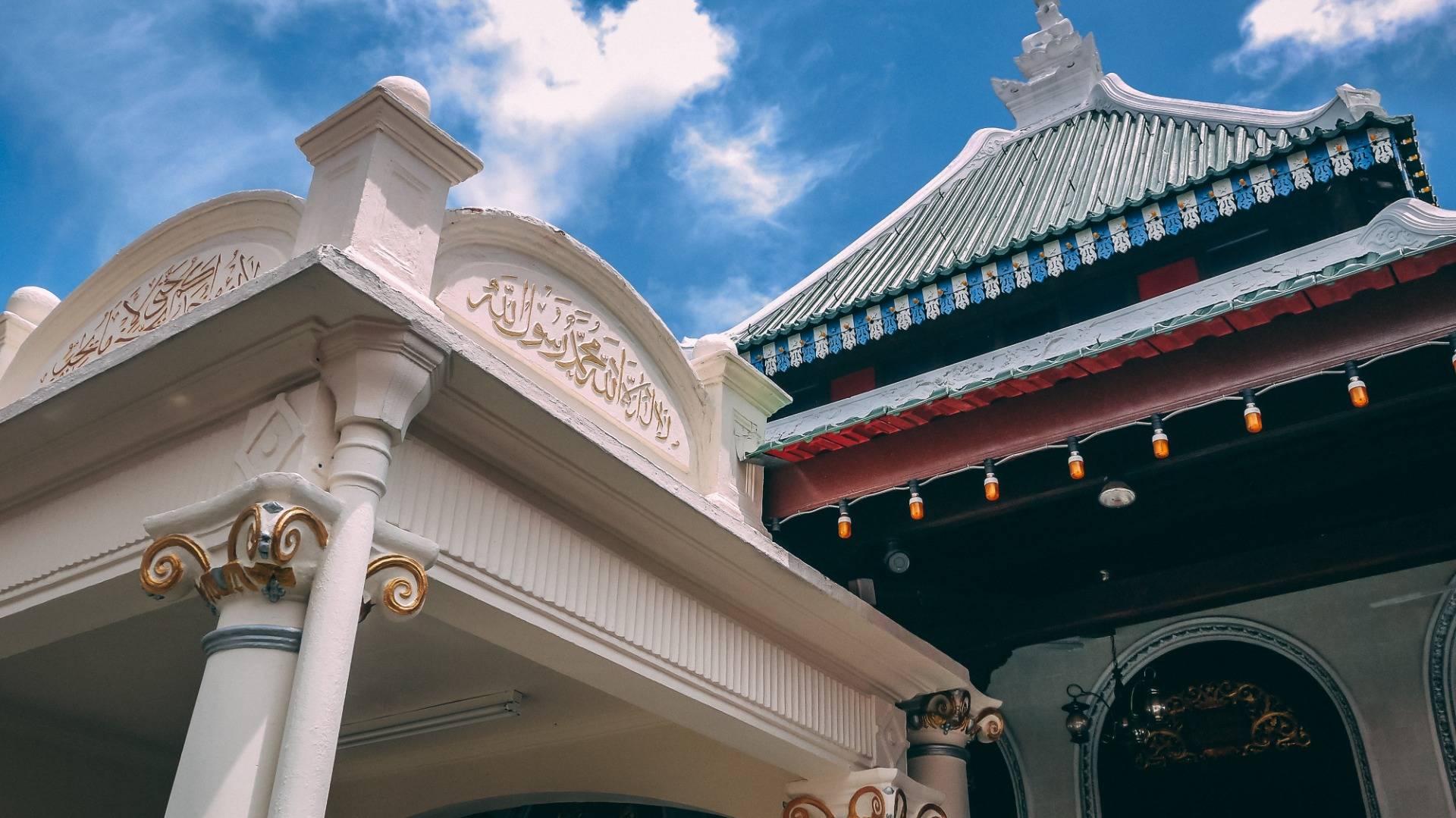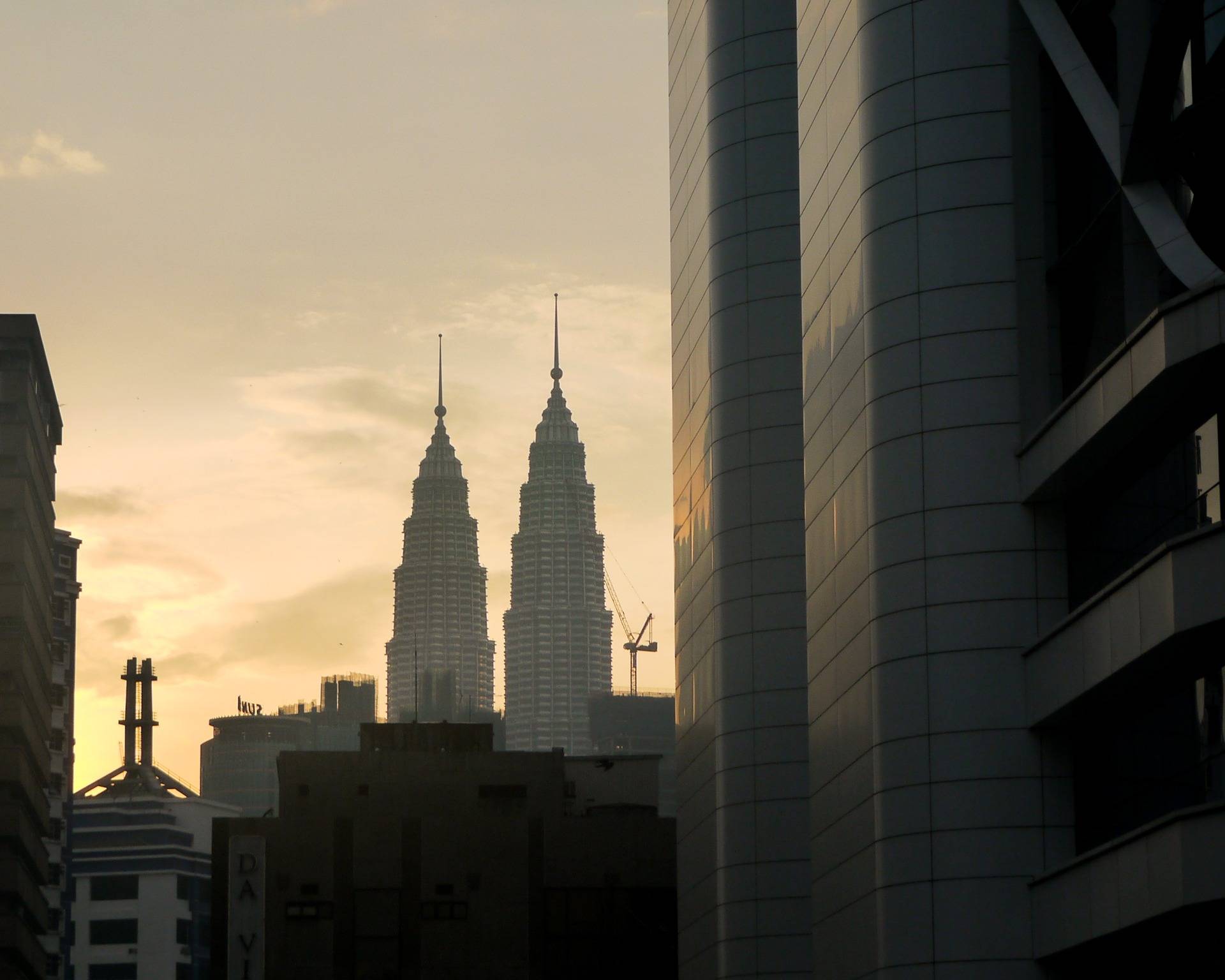Malaysia was the first Southeast Asian country we visited, ever, hence our shock when we arrived in Kuala Lumpur. The endless flood of scooters, breaking out from every single street around us and even driving on the pavement, our safe space as pedestrians, threatening to crush us like a wave, left us in awe. We had a hard time adjusting to the fact that crossing the street when the pedestrian light was green was a battle to be fought and won, unless we wanted to be stranded on the wrong side of the road forever.
Maybe unwisely, we had decided to end our trip with the country’s capital city. So far, we had enjoyed a casual strolling in the atmospheric streets of George Town in Penang, lined up with decaying yet alluring colonial buildings, Chinese temples filled with the smell of incense and historic mosques calling to prayer day and night. We had also rented a scooter to explore the island of Langkawi but the roads were so empty out there that we had even run a stop sign once, although inadvertently, without putting our lives on the line.
Kuala Lumpur obviously required more caution. For starters, renting a scooter was a big no-no. Strolling down the streets was an option to discover the few historic buildings that deserved a visit though, such as the gorgeous Moorish-style Sultan Abdul Samad Building, but it was tedious. Therefore, we felt the need to get away from the city.
Several options were possible and the first one we settled for was the closest. As it turned out, this didn’t guarantee we would get there easily as we struggled for a long time to find the right bus since the number of that bus was not the one written down in our guide. The train, or either a taxi, would have been better choices but no matter as we eventually arrived in front of the Batu Caves.
The magnitude of the caves was what struck us first but even more, it was the size of the golden statue that stood guard in front of the caves that astounded us. As impressive as it looked and as tall as it was, being the world’s tallest statue of the Hindu deity Murugan, the statue was a new addition to this religious complex as it had only been unveiled in 2006.
The Batu Caves themselves, were said to be over 400 million years old, but they hadn’t been designated as a religious site until the late 19th century. Since then, it had become a major Hindu site in Malaysia and beyond, drawing in Hindu pilgrims from all over the world in prayers and celebration. This was most notably the place where the yearly Thaipusam festival was held, during which icons and offerings were carried in procession to the caves.
At the time of our visit, there was no ongoing festival and it was empty-handied that we started climbing the 272 stairs leading to the Temple Cave, the biggest of all. Had we brought along food and beverages, we’d have been chased after by the many monkeys who lived in the area, only too eager to jump on a gullible tourist and plunder them. Some were even lurking inside the main cave but locals weren’t as easily tricked as tourists and they drove them away without batting an eye.
Mindfulness and respect were due within the Temple Cave, also known as Cathedral Cave because of its high ceiling and ornate interior, full of colorful Hindu shrines and statues. Pilgrims were lighting candles and offering their prayers, adding to the sacred atmosphere of the cave on top of its sheer impressive nature. At the base of the hill were two other smaller caves, the Art Gallery Cave and the Museum Cave, but neither were as spiritually-charged and dramatic as their bigger counterpart.
Evidently, coming back from these holy caves to chaotic Kuala Lumpur was moving from one universe to its complete opposite and it didn’t alleviate our prejudice towards the capital city, to the point that we decided to get on yet another day trip the very next day. Located about two hours away by bus, the historic city of Malacca was the perfect contender as it seemed to share a lot of similarities with George Town, a city we had deeply fancied.
The oldest Malaysian city on the Straits of Malacca, Malacca City had been at the core of the trade route in Asia but also further beyond, drawing the attention of traders from the Middle East all the way to Western Europe. Throughout the years it had been a Sultanate, a city conquered by the Portuguese then by the Dutch before becoming part of the British Empire, and was now the capital city of the modern Malaysian State of Malacca.
Few other places could boast such diverse heritage, which explained why the city had been listed a Unesco Heritage Site in 2008, along with George Town of Penang. This heritage was so prevalent in the city that, from the moment we got off the bus, it didn’t take us longer than a couple minutes to bump onto its most iconic landmark, the red-bricked Stadthuys, thought to be the oldest surviving Dutch building in the East. Once the seat of the Dutch officials, it stood opposite the equally as red Christ Church.
Between both buildings was a vast square where pumped up rickshaws were awaiting potential customers, some playing loud music, including Gangnam Style by Korean singer Psy, some decorated with Japanese icon Hello Kitty. It hardly got more multi-cultural than that.
A mere five minutes away on foot was the Melaka Sultanate Palace, a wooden replica of Sultan Mansur Shah’s 15th-century palace, easily identified from afar thanks to its convoluted roofs. The building had been meticulously reconstructed using traditional techniques, based on accounts written in the 16th century, according to which the palace had been built entirely without nails. Since 1989, the place had been dedicated to hosting a Cultural Museum displaying wax statues, historical artifacts and printings telling the story of the Malaccan Sultanate.

Ready to Blog & Earn?
With TravelFeed, easily start your own travel blog and earn as you go. It's the smart platform for travelers who want to profit from their passion. Create a free account
We then climbed up a hill near the Palace, that led to the ruins of the Church of St-Paul, the oldest church building in Southeast Asia, erected in 1521 by the Portuguese. From the original building, only a few walls still stood and tombstones carved with inscriptions and ominous skulls. Its location made it the perfect vantage point to admire the view on the ruins of the old A Famosa, a former Portuguese fortress which now consisted of a single gate house, the Porta de Santiago, firmly resisting the onslaught of time.
Upon further walking towards a lesser known part of town, we discovered the elegant pink façade of the more recent St-Francis Xavier Church, a legacy of French Priest Father Hervé, before crossing a bridge that led to a small array of pedestrian-friendly streets in a neighbourhood comprising the most multi-religious atmosphere, where the ancient Kampung Kling Mosque stood near the Buddhist Temple of Cheng Hoon Teng.

Don't Forget: Get Travel Health Insurance!
To make your trip a worry-free experience, TravelFeed recommends SafetyWing Nomad Insurance. It provides comprehensive health coverage while you travel, so you can focus on exploring, not the unexpected. Get a quote here
Two streets away stood the Baba Nyonya Heritage Museum, whose mission was to told the story of the Peranakan people, descendents of Chinese traders who had come to Malaysia from the 16-th century on and married Malay women. The male descendents, called Babas, made wealthy through trade, had bought Dutch houses and transformed them into palaces. The museum was one such house, carefull restored to look like a 19th-century Baba-Nyonya home.
Although a part of us felt that Malacca, for all its beautiful historic heritage, was a city that had been turned into some kind of an open-air museum, never once did we regret spending the day there. And in the end, paying a visit to Kuala Lumpur left us with no regret either, even though we had kept escaping it.
Travel Resources for your trip to Malaysia
Recommended by TravelFeed
Flights: We recommend checking Kiwi.com to find the best and cheapest flights to Malaysia.
Accomodation: Explore the best places to stay in Malaysia on Booking.com, Agoda and Hostelworld.
Travel Insurance: Medical emergencies abroad can be pricey, but travel health insurance is not. We always use SafetyWing for affordable and reliable coverage.
Car Rental: For hassle-free car hiring, DiscoverCars is our trusted choice with a wide selection of vehicles.
Internet: Got an eSIM compatible phone? Airalo is perfect for reliable internet access during your trip. Just install it before you go, and you're set!
Day Trips & Tours: We recommend GetYourGuide for a variety of well-organized and enjoyable activities.
Travel Planner: Need a hand planning? Our free travel planner chatbot is your personal guide to Malaysia. Chat now.
Disclosure: Posts on TravelFeed may contain affiliate links. See affiliate disclosure.
